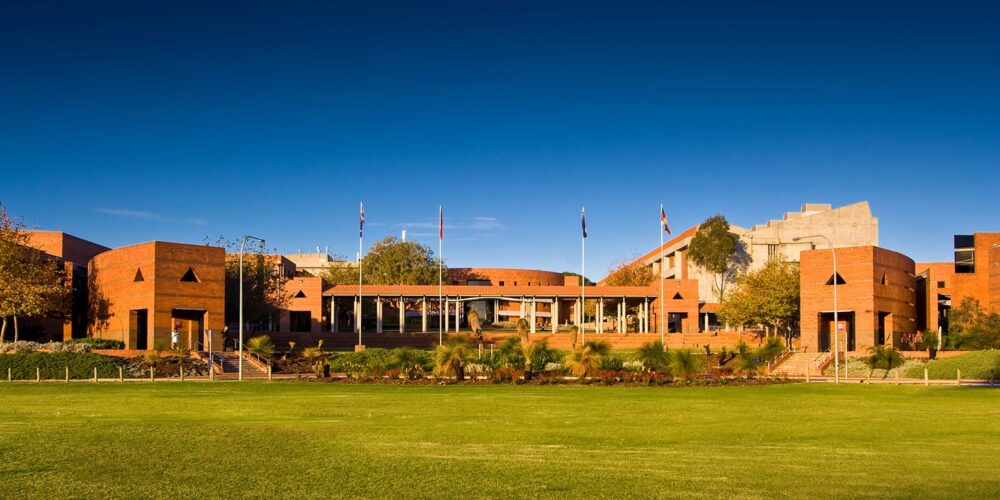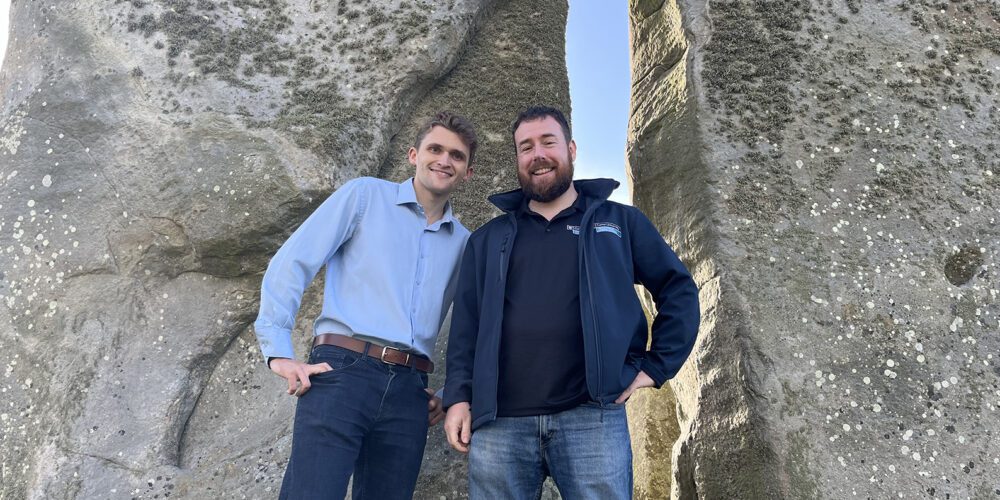Curtin research boosted by more than $3.7 million in ARC funding

Curtin University research projects have been awarded more than $3.7 million in the latest Discovery Project (DP) and Linkage Project funding rounds from the Australian Research Council (ARC).
The ten successful Curtin DP research teams will delve into a range of diverse topics including unlocking Earth’s fossil archives, exploring clean energy production, the social and justice impacts of drug use and whether money really motivates work performance, Curtin’s successful Linkage Project will look to improve building safety by the early detection of structural conditions.
Curtin University Deputy Vice-Chancellor Research Professor Chris Moran congratulated the Curtin researchers on their funding success.
“These ARC grants are highly sought-after and specifically support research that promises to deliver significant value to Australia and contributing to global challenges. I congratulate all of our researchers involved in them,” Professor Moran said.
“Each of the successful Curtin projects is unique and together they cover a range of important issues – including research which will have benefits for the Australian construction industry, tackling modern societal challenges in healthy ageing and neurodegenerative diseases and supporting the future development of reliable, low cost and clean energy.”
The ARC Discovery Projects scheme aims to expand the knowledge base and research capacity in Australia as well as the country’s economic, commercial, environmental, social and cultural benefits.
The Linkage Program promotes national and international research partnerships to encourage the transfer of skills, knowledge and ideas.
Further information can be found online here.
Curtin Discovery Project recipients
The molecular record in extraordinarily preserved plants and insects, John Curtin Distinguished Professor Kliti Grice; Associate Professor Marco Coolen
This project aims to unlock a hidden record of our planet’s past and the life it supported, using a novel approach with benefits for environment and industry. Fossilised soft tissues of plants and insects preserved in sedimentary concretions will be analysed, extending the traditional inorganic fossil framework of major evolutionary events. Understanding the biofilm entombment and preservation mechanisms responsible for this unique organic fossil archive will extend our knowledge of microbial functionality. Expected outcomes are a new way for interpreting our planet’s past, with improved understanding of extinction, disease, environmental change and consequent adaptation of plants and insects.
Development of Novel Metaconcrete to Resist Impulsive Loads, Dr Wensu Chen; Dr Thong Pham
This project aims to develop innovative metaconcrete for structural protection by utilising the concept of phononic crystals and metamaterials which has been recently developed by physicists. Traditional construction materials are used in new structural forms to mitigate dynamic loading effects by exploiting the unique characteristics of the proposed metaconcrete. The expected outcomes of the project will lead to innovative extreme-loading resistant designs and provide significant benefit to the Australian construction industry, general public and economy.
On-water electrochemistry: redox catalysis at the water surface, led by Associate Professor Simone Ciampi
From plastics to pharmaceuticals, chemists rely extensively on expensive and environmentally damaging solvents and reactants. In water, greener and cheaper electricity-driven reactions currently suffer from low velocity and poor selectivity. The project aims to develop the science of on-water electrochemistry, to make electricity-driven organic reactions in water viable so we can move beyond current reactor designs to transform our view of electrochemistry and improve the sustainability of the chemical industry.
Microbially induced calcium carbonate precipitation in different substrates, Dr Navdeep Dhami; Professor Abhijit Mukherjee
Carbonates in the form of limestone represent an important reservoir of carbon on earth. They are recorded in several natural geological formations as corals, stromatolites, beach rocks. Microbes play an important role in the formation as well as dissolution of carbonates during microbially induced calcium carbonate precipitation (MICP) reactions on different substrates in natural and built environments. Much of our knowledge on MICP is limited due to poor understanding of the reaction kinetics at a molecular level. This project will develop new methods to enable and advance the knowledge of MICP process with profound implications for understanding natural geological formations as well as widen the scope of current engineering applications.
Criminal justice outcomes of injecting drug use and methamphetamine smoking, Professor Paul Dietze; Associate Professor Michael Livingston
Injection drug use (IDU) and methamphetamine smoking are associated with the majority of illicit drug-related harms and associated costs in Australia. This study will extend previous studies of people who inject drugs and people who smoke methamphetamine through record linkage to social and criminal justice datasets. We will characterise the trajectories of participants through social services (e.g. public housing) and law enforcement systems to provide a comprehensive account of social and criminal justice impacts of injection drug use and methamphetamine use in Australia for the first time.
To use or not to use financial incentives for motivation and performance, led by John Curtin Distinguished Professor Marylene Gagne
For decades, compensation experts have advocated for the use of financial incentives to motivate work performance, yet organisations keep encountering performance issues caused by these incentives. Using agency, expectancy, and self-determination theory to inform a meta-analysis and a series of experiments, this research will help uncover the most important motivational mechanisms that explain how financial incentives influence different types of performance. Given that compensation accounts for an important proportion of an organisation’s operating expenses and that employee engagement is on the decline around the world, this research will provide a strong empirical basis to develop more effective compensation systems.
What goes on inside subduction zones? led by Professor Chris Clark
This project aims to decipher how rocks behave inside subduction zones. Subduction is a central tenant of plate tectonic theory and the project will test the hypothesis rocks can become trapped within giant long-lived eddies that circulate material within subduction zones. This international collaborative project will generate new knowledge regarding the time scales rocks can remain trapped inside subduction zones using pressure temperature age constraints from subducted rocks. This information will be used as a framework for numerical simulations of subduction zone behaviour. The project will provide significant benefits in training a new generation of earth scientists, and in broadening public awareness of fundamental earth science.
Correlative imaging of brain lipids, Dr Mark Hackett; Professor Massimiliano Massi
This project aims to develop imaging tools and protocols for the detection of lipids in brain tissue and cells. This project expects to generate advanced methodologies to display specific lipid classes and their corresponding structures within tissues and cells, with the ability to be detected and correlated with multiple techniques, which represent a currently unavailable capacity. The expected outcomes of this project are improved opportunities to study lipid biology at the cellular and sub-cellular level across a wide range of in vitro and in vivo models. The project should provide significant knowledge to tackle modern societal challenges in healthy ageing, brain pathologies and neurodegenerative diseases.
Advanced Proton-Conducting Ceramic FCs for Power Generation from Ammonia, led by Professor Moses Tade; Associate Professor Ranjeet Utikar
This study will reinforce the development of the future supply of reliable, low cost and clean energy.
The project aims to design an innovative ammonia fuel cell using a new perovskite substrate decorated with metal nanoparticles, which demonstrates multi-functionalities and tackles most challenges of conventional fuel cells (FCs). The key concept of this project is the designing of the novel architected smart perovskite as both anode and electrolyte of the fuel cell by systematic modelling and experimental development. The versatile cell components developed in this project will improve the operational stability and efficiency of the fuel cell, thereby providing a promising pathway for ammonia fuel cells to replace hydrogen fuel cells.
Curtin Linkage Program recipients
Structural Health, John Curtin Distinguished Prof Hong Hao; Prof Ling Li; Dr Ngoc San Ha; Dr Qilin Li and Dr Senjian An
Structural health monitoring is vital for infrastructure assets management as early detection of structural conditions is key to both safety and ongoing maintenance. This project combines computer vision, vibration tests, finite element modelling and deep learning technologies to develop an efficient structural health monitoring system. Digital twins created from images taken by cameras or UAVs will be correlated through deep learning with structural conditions and load-carrying capacities obtained from vibration tests and finite element model analysis for efficient structural damage detection and quantification. The project will lead to effective structural health monitoring and enhance structural safety and reduce maintenance costs.



